How to Identify Goose Feathers
Canadian or Canada Geese are a large bird species that is heavily populated throughout North America, well beyond their Canadian namesake. They are a common sight around many watershed areas and are commonly seen flying overhead during seasonal changes. When you see geese flying south, it is time to bundle up and prepare for winter weather to fly.
As a result, many of the feathers you find during your regular bird-watching adventures are probably geese, especially if spotted near common goose nesting grounds. But how can you be sure? And is it safe to keep these feathers, or will you be prosecuted? We have the answers to these questions and much more in this fun and informative article. We’ll even include goose feather symbolism information for those interested in bird-related spirituality.
Related post: How To Identify Osprey Feathers
What Do Canadian Geese Feathers Look Like?
Canadian geese have several feather types, including primary and secondary wing feathers, tail feathers, and contour feathers. Each of these feather types provides different benefits to the goose. These include helping it fly and giving it extra insulation against the weather. Each of these feathers looks slightly different and includes varying lengths, depending on the goose itself.
These feathers also have varying color patterns that help contribute to the goose’s overall coloring. This creates a surprisingly diverse array of different feather looks that may not even seem to come from the same bird! However, the following information should help you identify these feathers more easily. We include not just the color patterns on the feather but its overall length as well:
Primary Wing Feathers
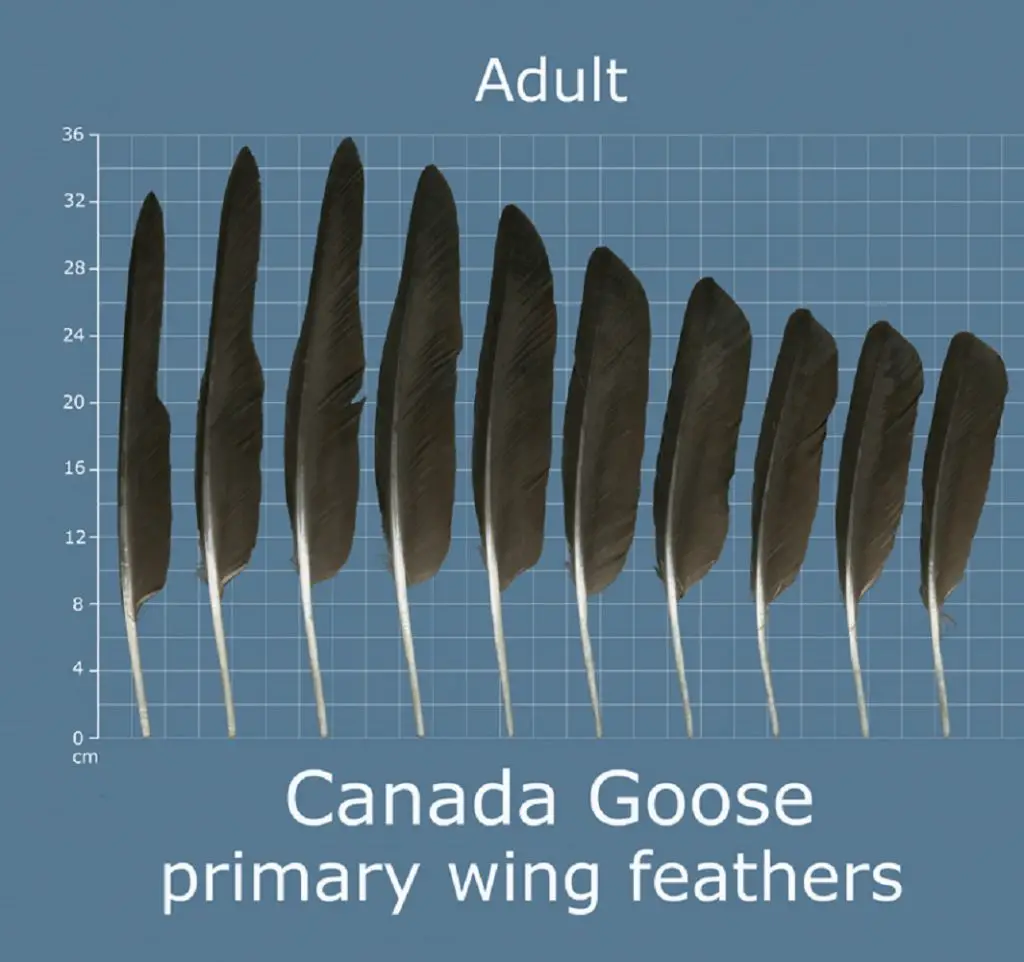
These are the longest and most essential feathers on a Canada goose’s body. They help provide their wings with the lifting power they need to fly, as well as a leaner overall shape that helps control flight. They range from about 24 to 36 centimeters (9 to 14 inches) and are usually fairly dark, maintaining an almost uniformly black look throughout their length and width.
Related post: How to Identify Bald Eagle Feathers
Secondary Wing Feathers
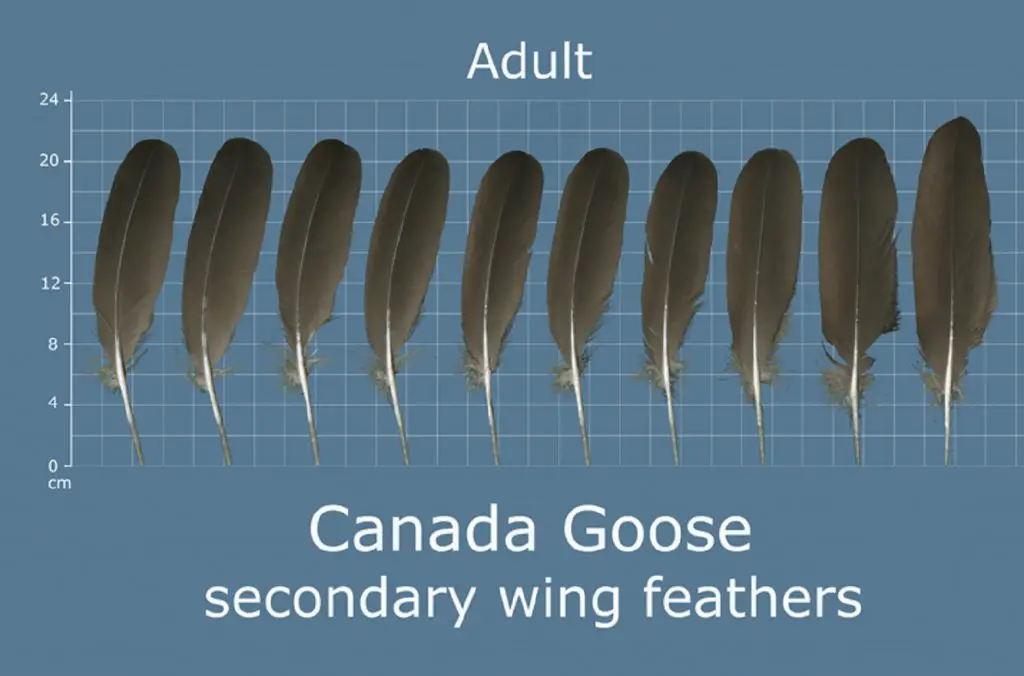
These shorter wing feathers range from 20 to 24 centimeters (8 to 9 inches) and are usually a little lighter along their length. Unlike the primary wing feathers, which may feather a narrower tip and a broader body, they’re usually uniform in width. They tend more toward a darker gray or lighter black, depending on the goose’s age and their location on the body.
Contouring Feathers
Geese, like other birds, have much shorter contour feathers that sit closer to the body and don’t help with lift. Instead, they streamline the goose’s body and help keep them in the air. They also help insulate the bird during winter and summer. Contour feathers are usually about 18 to 20 centimeters (7 to 8 inches) and have lighter and fluffier edges, often looking closer to down feathers.
Tail Feathers
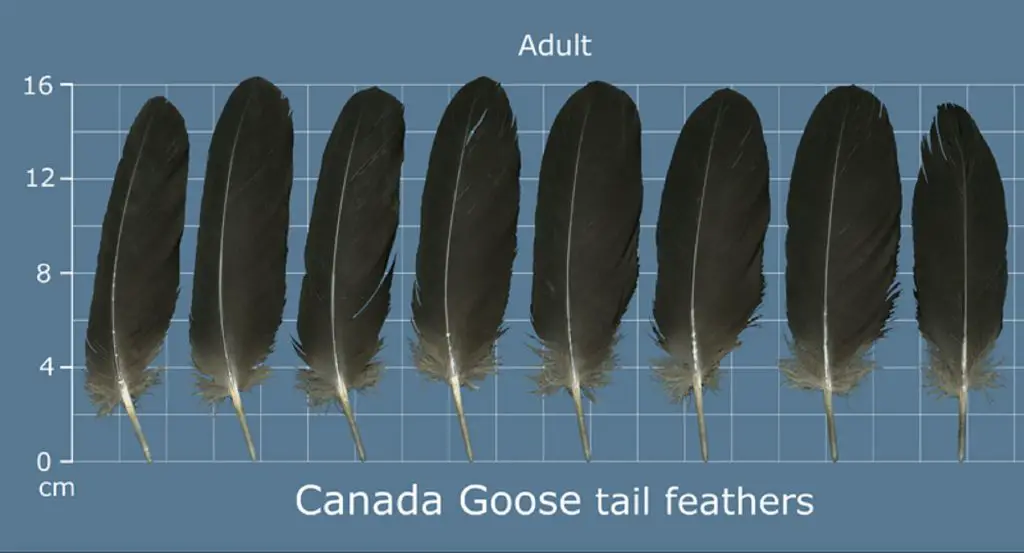
A goose’s tail feathers are much shorter (around 16 centimeters or 6 inches) and are usually quite black, like tail feathers. They might be slightly lighter at the base but typically remain quite black. You may easily mistake them for secondary feathers because they have a similar overall shape. However, they are darker and a little fluffier at the end and are much shorter.
What color are Canada geese feathers?
Generally, goose feathers are primarily black, though that may vary depending on a few factors. For example, Canada geese have some brown patches throughout their body and their feathers. These brown feathers are usually a bit fluffier and more for decoration than flight. Geese may also have some white feathers on their head and throughout some stretches of their body.
However, geese’ feathers remain pretty uniform in color and shape. That makes them pretty easy to identify, especially when found near common geese nesting grounds. Geese typically nest near water sources and leave behind lots of feathers when they molt. That makes it fairly easy to find a good amount, though taking them home with you is not a wise idea.
Related post: How to Identify Turkey Feathers
Can You Keep Canada Geese Feathers?
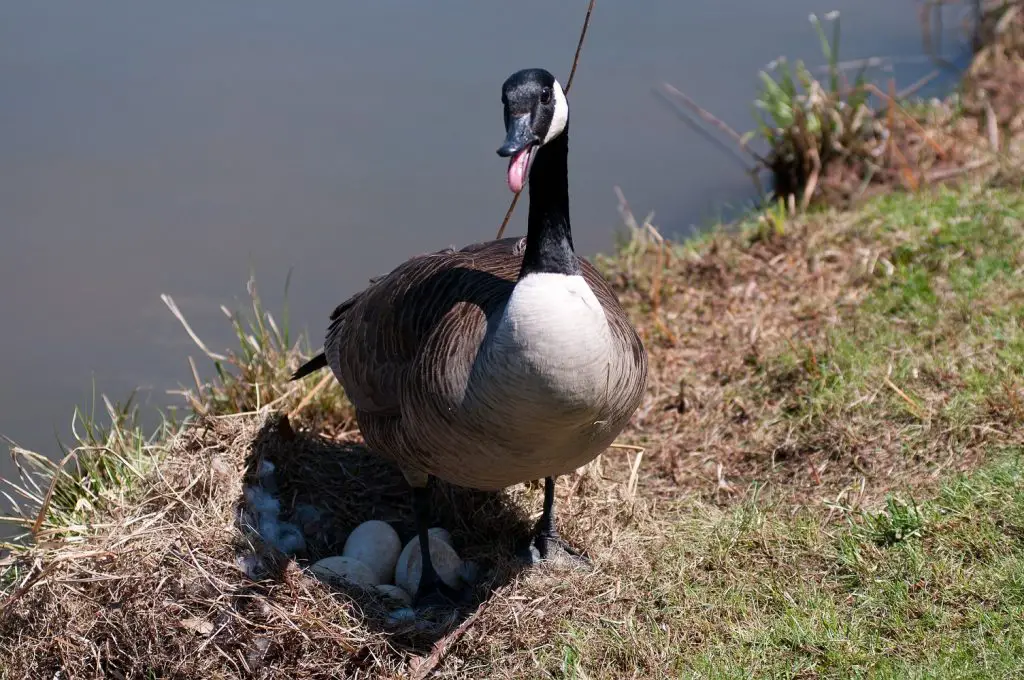
If you find a Canada goose feather, you may be tempted to keep it to show your friends and other bird lovers. However, you would technically be breaking an international law that makes it illegal to keep, distribute, or sell bird feathers. This law is the Migratory Bird Act of 1918, one that is consistently updated to include multiple species from throughout the United States and other countries.
Though some feathers are legal to take in North America, such as those from birds not native to the country or some game birds, you typically cannot keep any feathers you find in America. It is usually best to be safe than sorry because this law can include heavy fines and even jail time if broken. And yes, the latest version of this law does include the Canada goose.
As a result, it is important to just leave bird feathers where you find them or to take a picture and add it to your collection that way. Note that there are some exceptions to this law. If you belong to a Native American tribe and Canada geese are important to your culture, you may collect and give geese feathers to other Native Americans. You cannot give them to non-Natives, nor can you buy geese feathers from a Native American if you are not Native.
Related post: How to Identify Owl Feathers
Do Canadian Geese Lose Their Flight Feathers?
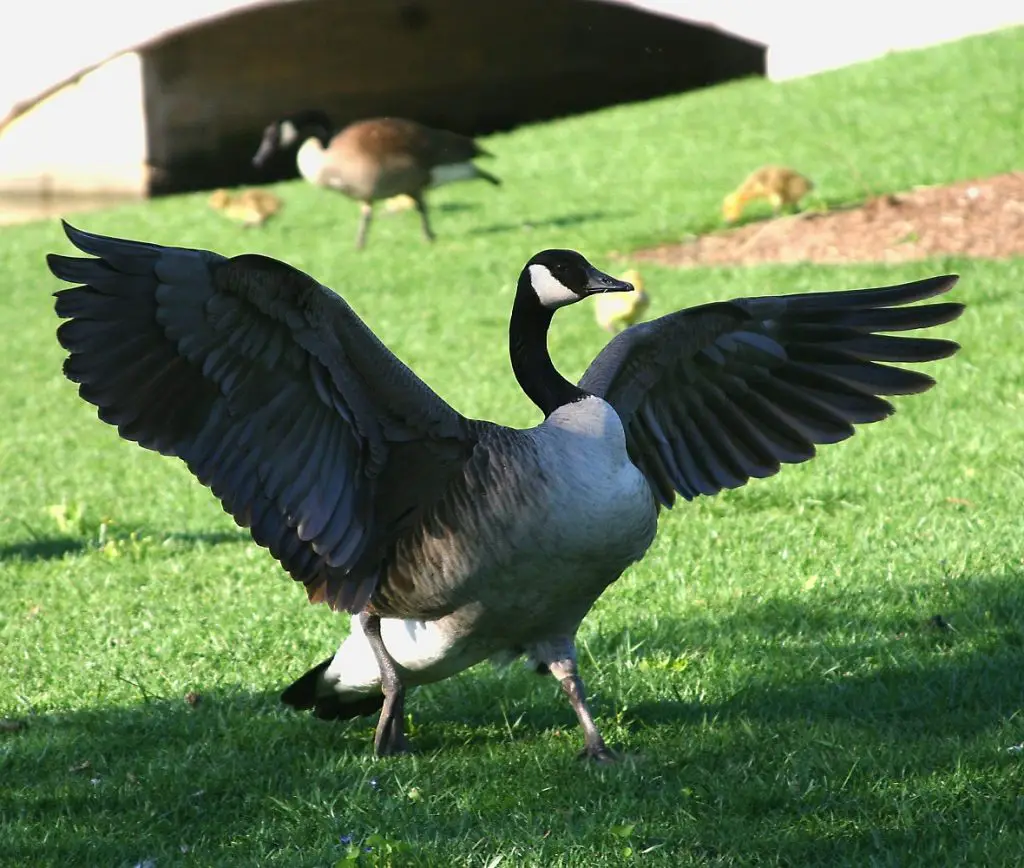
Like all birds, Canadian geese lose their flight feathers through molting. However, they are like other waterfowl in that they lose all of their flight feathers at once in late June and early July and need to regrow their flight feathers before they can take to the air again. This one-month period is fraught with potential danger, though geese flocks instinctively know to protect each other during this time.
Typically, Canada geese will molt near water and a food source, making it easier to stay within walking distance of these areas. They also typically molt in protected areas where they can easily see potential danger. Pay attention to spots like these near rivers, lakes, and ponds to get the best chance of finding a huge goose molt. The feather concentration is often very intense.
Related post: How To Identify Turkey Feathers
How Old are Geese When They Get Their Feathers?
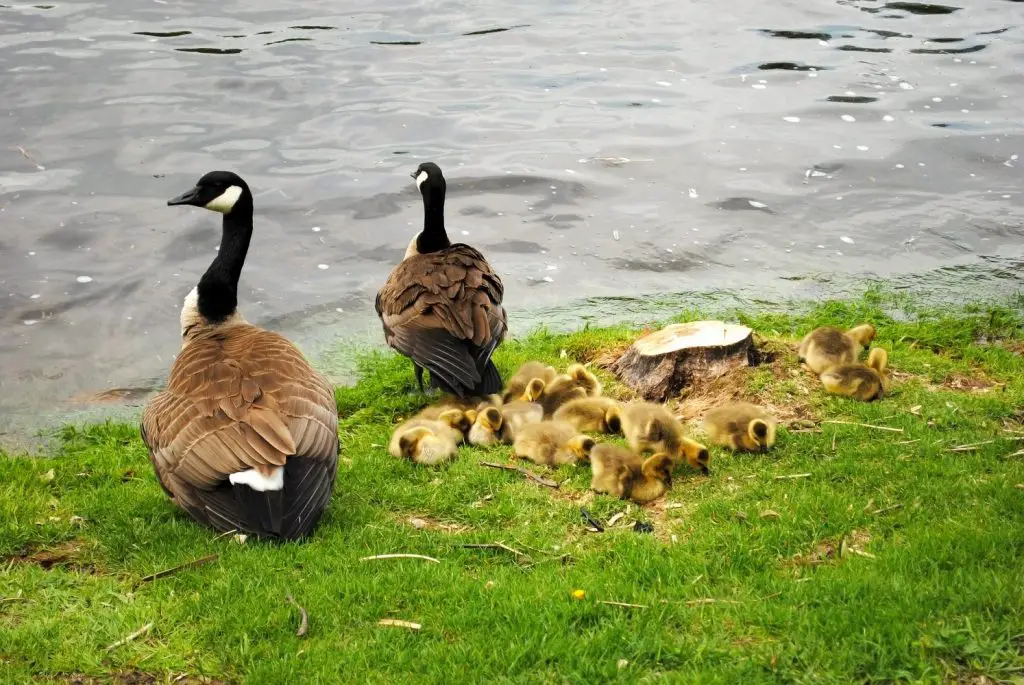
Goslings are born with their eyes open and walk out of the nest within 24 hours after birth. This feat is similar to many birds and other animals in the wild. In fact, goslings start swimming right after birth and have their adult feathers in no more than two months. It is during these early months that baby geese are at their most vulnerable, making a tight-knit flock essential.
After two months, they should already be flying alongside their parents. However, they will stick with their flock to be safe and rarely wander away alone. Geese flock instinctively and don’t enjoy spending time alone. They’ll typically find shelter with their flock as soon as possible and rarely wander too far from them. Young goslings are particularly conservative in how far they wander.
Related post: The Coolest Birds
What Does It Mean If You Find a Canadian Goose Feather?
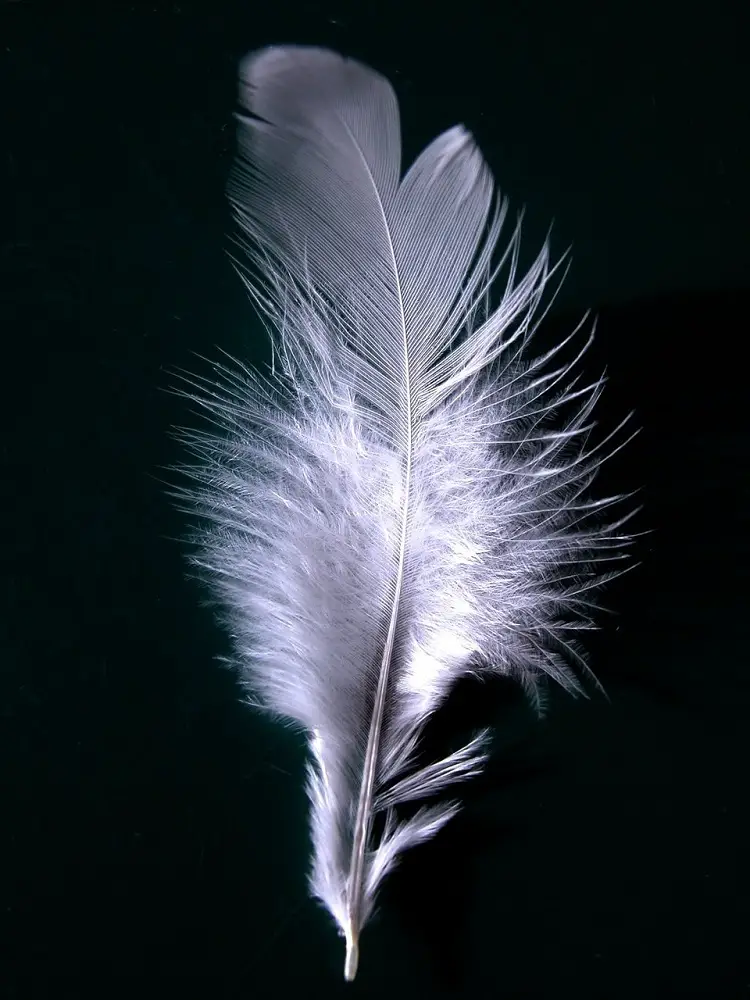
Geese have a diverse array of cultural meanings that vary depending on the region. For example, the popular myth about the goose that laid the golden egg indicates a few of the biggest meanings of this bird. They include faithfulness, companionship, purity, tranquility, humility, and wisdom. Geese are often considered some of the smartest birds in the wold and are revered for this reason.
Companionship and Family
Geese are almost always seen in flocks, where they are protected from predators and can keep their goslings safe. As a result, they’re a common symbol of family and unity. Finding a goose feather may be the universe telling you to focus on family time or on building stronger bonds with loved ones. It may also emphasize the importance of family time in your life.
Compassion and Caring
Anybody who’s ever been chased by a goose may not consider them a very compassionate animal. However, they only behave this way in defense of their family members and friends. In fact, geese are known to watch over sick or injured companions to help nurse them back to health. Finding a goose feather may be the world telling you to show more compassion or letting you know you deserve some.
Related post: Osprey Feathers Meaning
Tranquility and Humility
When left to themselves in nature, geese are incredibly tranquil and kind towards their family. Finding a goose feather may be the universe telling you to seek similar tranquility or that you’re close to obtaining it in your life. It may also be the universe telling you to show more humility in your daily, particularly when interacting with friends and other loved ones.
Safety and Protection
The protection of a typical geese flock is a powerful image that you can use in your daily life. Surround yourself with loved ones to ensure that you are safe from the dangers of the world around you. Finding a goose feather may be telling you that you need this kind of protection and to seek it out wherever possible. It may also be the universe letting you know that you are protected and safe in your current environment.
Related post: How to Identify Red-Tailed Hawk Feathers
Wrap Up – How To Identify Goose Feathers
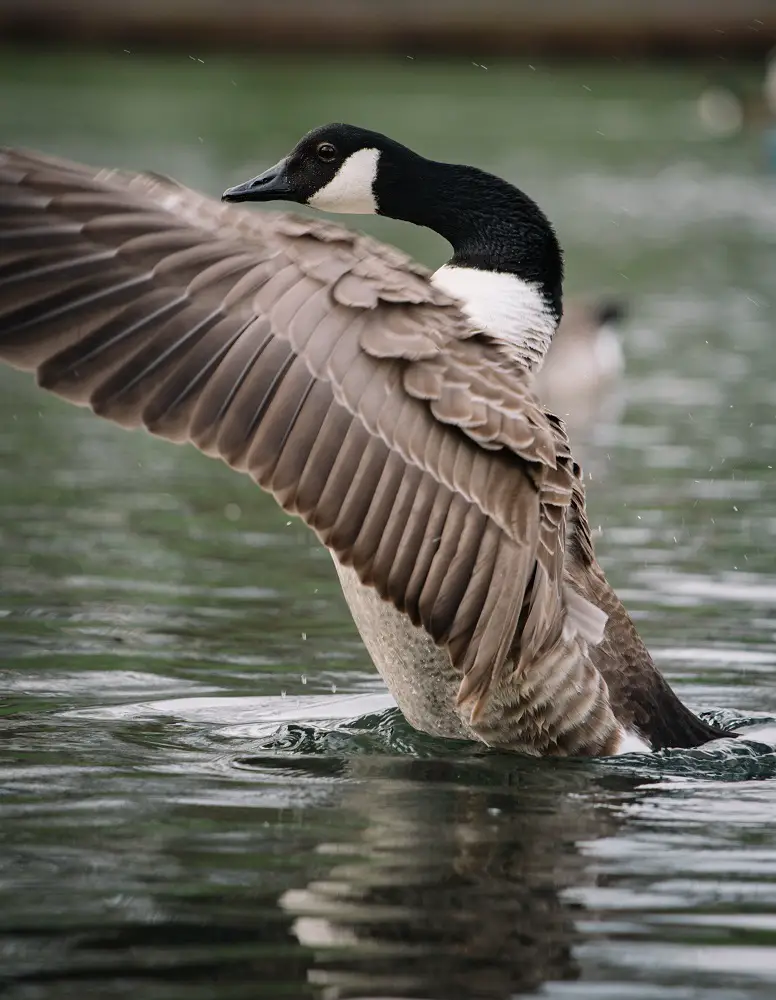
We hope you’ve enjoyed our goose feather identification guide! Once you’ve taken some pictures of feathers you’ve found in the field, come visit us again and try identifying them. We also hope you’ve learned about the imagery and symbolism of geese feathers. While these birds are common, they still have deep meanings behind them.